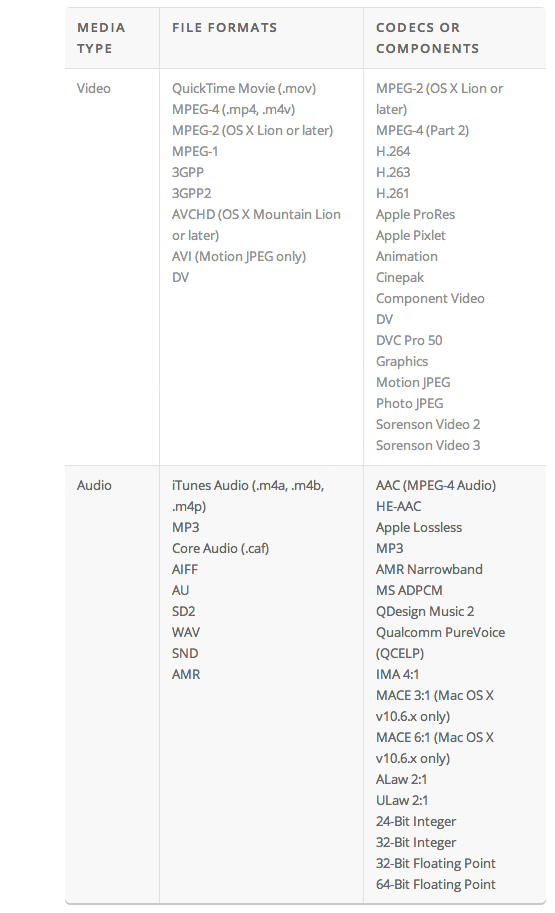Sorenson 3 Codec For After Effects
Although not everyone can appreciate the amount of time and details provided in “The Best File formats and Codecs in After Effects”. For those who make a living in this field it has tremendous value. Even seasoned editor and compositors with a lot of knowledge of codecs can only mentally store so much, more often the case we choose a workflow based on the information we can find at that time, that best completes the job. This does not always mean it’s the best choice of workflow, just that it allows us to finish and get paid. Personally I love instructional videos like this, it gives us the information and opportunity to revisit our workflow while plugging in the variables needed for improved efficiency the next time around.
Time really is money. Thanks for your time and putting this together. Personally I would love to have a summarized breakdown (if even possible) of the information along with the charts. Even just the charts would be great.
We've been seeing this too. We're running MC 2018.4 with Adobe ME v12.1.1.12 (the latest, as of today.) Same-as-source Quicktime exports from MC have been problematic, mostly appearing completely black in ME. The Same-as-source mechanism has always been a bit sketchy, since it adopts the codec of the very first clip in your sequence, regardless of the dominant format of the rest of the clips. For instance, if your sequence starts with a title that was imported at AVC-Intra 100, then your SAS QT export will use that codec, even if the rest of the clips in your edit are DNxHD 36.
(I know the Media Creation settings are meant to address this, but they don't always seem to 'stick'.) Even with this in mind, we've found odd examples of DNxHD 115 material showing up as 'DNxHD 116' in MediaInfo, ffprobe, etc. I haven't had time to properly troubleshoot this, but I'd be curious to hear what other users are finding. An update on this: It appears that a 'Same-as-source' Quicktime Movie can in fact contain multiple 'flavors' of DNxHD- e.g. DNxHD 36, 115, etc. The resulting QT file will still report 'DNxHD' as the codec, but the bitrate will be an average of the different formats within. For instance, a sequence with half DNxHD 36 and half 115 will report a bitrate of about 80. This type of QT Movie- self contained mind you, not a reference QT- is apparently no longer supported by Adobe ME since they dropped 32 bit Quicktime support, despite DNxHD being a modern, 64 bit codec.
So, we're left with fewer choices for creating web-viewable content from Media Composer. I don't think I'm alone in asking Avid to include some built-in transcoding mechanism for creating- for instance- an H.264 encoded MP4 file without have to do the same-as-source-then-transcode-elsewhere dance, with its unpredictable gamma shifts and unnecessary compression artifacts. This is a feature of every other NLE out there in one form or another. At the very least, update the 'Same-as-source' concept to include the newer MXF wrapper. Syncmaster 305t drivers. At the very least, I should be able to get the timeline out of the Avid and into someone else's software without transcoding everything twice.
May 15, 2011 - However, I can help you understand what a codec does and how to choose one that. VC H.263; Video; Sorenson Video (but not Sorenson Video 3). For the web that can be played back only after compression is complete. Jun 20, 2007 - I rendered a minute of video with the 3 formats. The video is all done and you want to put it online, sorenson 3 is a great choice as is H.264.

How about a 'Same-as-source' OP1a MXF that fast-exports rather than re-encodes, and can be inported into Media Encoder, Compressor, ffmpeg, Resolve, etc.? I don't think I'm alone in asking Avid to include some built-in transcoding mechanism for creating- for instance- an H.264 encoded MP4 file without have to do the same-as-source-then-transcode-elsewhere dance, with its unpredictable gamma shifts and unnecessary compression artifacts. This is a feature of every other NLE out there in one form or another. At the very least, update the 'Same-as-source' concept to include the newer MXF wrapper. At the very least, I should be able to get the timeline out of the Avid and into someone else's software without transcoding everything twice. How about a 'Same-as-source' OP1a MXF that fast-exports rather than re-encodes, and can be inported into Media Encoder, Compressor, ffmpeg, Resolve, etc.?